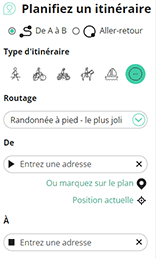Source: Willem Vandenameele


Inevitably a symbol of the lost freedom for Siena, the Governor's Palace stands in "opposition" to the Palazzo Pubblico, and in one of the most important places in the city, Piazza del Duomo, as if it wanted a visible and solid presence next to that equally powerful seat of power represented by the Archbishop's residence. The history of the palace largely coincides with that of the city of Siena itself, especially with regard to the period of Medici rule.
The palace seems to have been built in 1490 by Jacopo Petrucci, who bought houses from the Spedale della Scala and wanted to build his residence on it; later the building was enlarged by his son Cardinal Raffaello Petrucci.
The original design work of the building is attributed to Bernardo Buontalenti, the eminent Medici architect. However, the architect of the renovation desired by the Medici seems to be the lesser-known architect Raffaello di Zanobi Pagni. The problem of the palace's initial renovation is relatively important, as very little of what was done then survives today; the building has undergone a continuous evolution and has undergone numerous changes.
Prince Mattias de' Medici, third son of Cosimo II, appointed governor of the city of Siena in 1629, ordered such a general renovation of the palace that one could almost speak of a new building.
In June 1660, the interiors of the palace were almost perfected, while the square was "bricked" externally only along the facade of the palace and the steps of the church.
The governor's decision to stay in the palace made it necessary to complete the paving of the square; at the same time, the ornament of the facade was completed, inserting the so-called "portal-balcony-window" system.
The changes made to the palace were therefore numerous, so much so that on the threshold of the eighteenth century it appeared quite different from the original: it had in fact become the dignified residence of a ruling dynasty, as well as the eternal monument to the completion of the unification of the Tuscan state.
During the eighteenth century (in 1737 the Medici dynasty died out and the Grand Duchy of Tuscany "passed" to Habsburg-Lorraine), the palace was subjected to numerous further restoration and consolidation interventions, especially in the external ornaments due to tuff-like material , very sensitive to atmospheric changes.
At the end of 1700, Siena was hit by a strong earthquake, but the palace withstood earthquakes very well: the greatest damage was done to the outer wall, which had suffered subsidence and was repaired by the use of iron chains.
During the so-called "French times" some consolidation works were carried out on the outer walls; the decoration of the plinth of the plinth and the windows was also renewed and the facade overlooking Via del Capitano was embellished.
The new Italian state assigned the palace for the offices of the province and once again recognized it as the seat of the highest political authority of the city.
The transfer to the building of the offices of the prefecture has deserved to be attributed again to the palace that historical function, exercised during the Medici and Lorraine era, as the seat of the local representative of the government.
Source: Willem Vandenameele
![]() | | Public | Italien • allemand • danois • espagnol • français • néerlandais
| | Public | Italien • allemand • danois • espagnol • français • néerlandais

Sélectionnez l'une des activités les plus populaires ci-dessous ou affinez votre recherche
Découvrez les plus beaux et les plus populaires itinéraires du secteur, soigneusement regroupés dans des sélections appropriées.
Source: Willem Vandenameele
Sélectionnez l'une des catégories les plus populaires ci-dessous ou inspirez-vous de nos sélections
Découvrez les plus beaux et les plus populaires points d'intérêt du secteur, soigneusement regroupés dans des sélections appropriées.
Source: Willem Vandenameele
Avec RouteYou, vous pouvez facilement créer vos propres cartes personnalisées. Tracez votre itinéraire, ajoutez des points de passage ou des points-nœuds, planifiez des points d'intérêt et des lieux de restauration, et partagez le tout avec votre famille et vos amis.
Planificateur d'itinéraire

<iframe src="https://plugin.routeyou.com/poiviewer/free/?language=fr&params.poi.id=8280789&params.language=en" width="100%" height="600" frameborder="0" allowfullscreen></iframe>
© 2006-2026 RouteYou - www.routeyou.com